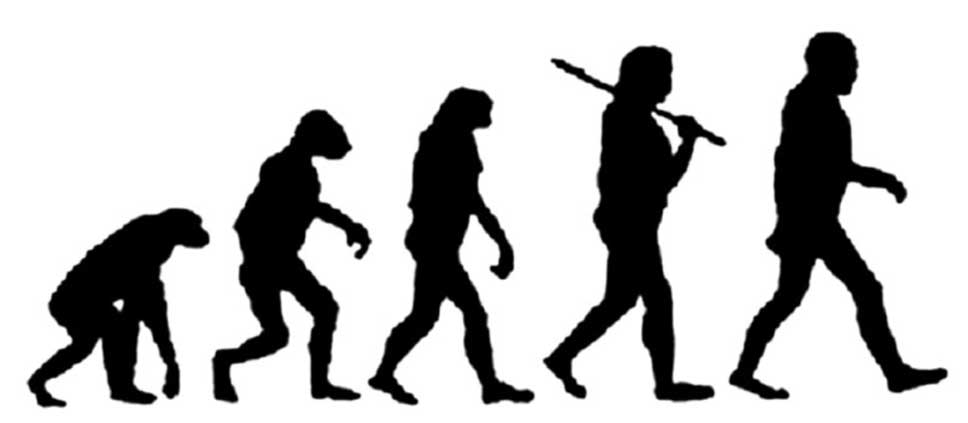Growing animosity between the political parties, rising support for anti-democratic norms, and outbursts of partisan violence threaten the social fabric of our nation. In fact, popular caricatures of political figures as “subhuman” animals suggest that blatant dehumanization, the assertion that another group of people is other than human, is also prevalent among American political partisans.
This is perhaps unsurprising, as Democrats and Republicans are deeply polarized and their dislike toward each other is at a 40-year high. But dehumanization goes beyond disagreement and dislike. When people are thought to be less than human, it justifies their mistreatment. For instance, people who dehumanize other groups are more likely to support discrimination, military aggression, and using torture against them.
Dehumanization Is Surprisingly Pervasive
Nour Kteily and his colleagues developed an innovative way to measure dehumanization by asking people to rate how “evolved” various groups in society are using the popular “Ascent of Man” image of evolutionary progress, shown in the image below—where it starts with the silhouette of an ape and progresses through silhouettes of different stages of human evolution, up to a silhouette of modern man. Several independent research teams have found Americans are more than willing to dehumanize their political opponents on this measure.

In a study I conducted just before the 2020 election, 2 out of every 3 Americans who support one of the major parties considered members of the other side to be less human than their own party. Democrats and Republicans rated the other political party on this image using a scale that ranged from 0 to 100. Dehumanization was pervasive on both sides of the aisle, and on average, American partisans rated the other side as 42 (out of 100) points less than human.
The Tit for Tat of Dehumanization
As dehumanization is both extremely overt and widespread, we must consider whether partisans perceive their own group to be dehumanized by the other side. Such a perception would influence self-image, attitudes towards others, and intentions. So, inspired by the work of Samantha Moore-Berg and her colleagues, I asked Democrats and Republicans how they thought the other side would rate them on the “Ascent of Man” scale. Despite evidence that high levels of actual dehumanization exist, partisans greatly overestimated how much the other side dehumanized them. On average, both sides thought the other dehumanized them more than twice as much as they actually did.
This misperception has important consequences, because when people think their group is dehumanized by another group, they lash back. A sort of “you dehumanize me, I dehumanize you” tit for tat. And it doesn’t stop there.
Feeling Dehumanized Erodes Democracy
Troublingly, partisans who dehumanized the other side were more likely to support using anti-democratic means to hurt them, agreeing with statements like (for Republicans) “Trump should use force to stay in power if the election results seem fraudulent” and (for Democrats) “The Democrats should do everything they can to hurt the Republicans, even if it is at the short-term expense of the country.” The more Democrats and Republicans overestimated how much the other side dehumanized them, the more likely they were to dehumanize the other side in turn, which made it more likely they would support actions that hurt the other side and hurt society.
Short-Circuiting This Cycle?
If partisans think the other side dehumanizes them far more than they actually do, how do such misperceptions arise? As with other misperceptions, one answer may lie in exposure to partisan media. In fact, those who reported viewing the most political news online also had the most exaggerated (that is, inaccurate) idea of how their group was viewed. This may be because partisan media often thrives on stoking division and heightening perceptions of difference between the parties.
Can correcting people’s misperceptions of how much “the other side” dehumanizes them reduce their tendency to “give as good as they get?” In a follow-up study, I provided partisans with the actual levels of the other side’s dehumanization of them (taken from the first study). Although this corrective information did indeed lead partisans to feel less dehumanized, it did not decrease their own dehumanization of the other side. Recall that, on average, partisans rated their opponents 42 (out of 100) points less than fully human. So even though participants felt somewhat less dehumanized after the intervention, they seem to have remained hostile toward those who don’t consider them fully human.
This points to a need to tackle the problem of dehumanization on two fronts. We must also reduce the actual dehumanization, not just the perception of it. We can take this important step ourselves by recognizing our own tendency to dehumanize those who seem misguided, immoral, or evil to us. We can also challenge it when we encounter dehumanizing language used by others, especially among those on our own side as we are often more receptive to the opinions of “our own” over outsiders. Learning more about dehumanization and how to resist it can help a divided nation embrace coexistence, or even harmony, over discord.
For Further Reading
Landry, A. P., Ihm, E., Kwit, S., & Schooler, J. W. (2021). Metadehumanization erodes democratic norms during the 2020 presidential election. Analyses of Social Issues and Public Policy, 1-13. https://doi.org/10.1111/asap.12253
Landry, A. P., Ihm, E., & Schooler, J. W. (2021). Hated but still human: Metadehumanization leads to greater hostility than metaprejudice. Group Processes & Intergroup Relations, 1368430220979035. https://doi.org/10.1177/1368430220979035
Alexander Landry researches the psychology of extreme intergroup conflict and violence. He will begin his pursuit of a Ph.D. at Stanford University’s Graduate School of Business this fall.




